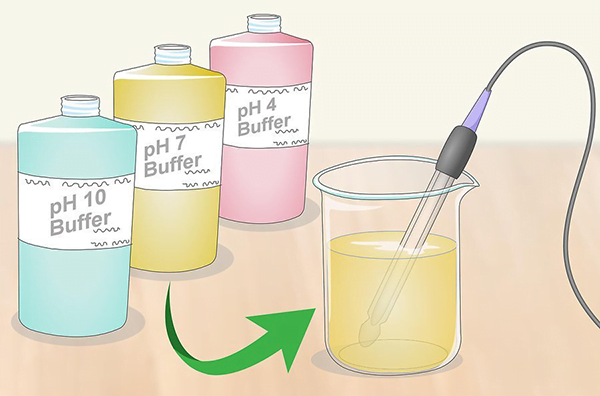When should I clean my pH probe and with what?
 Depending on what has fouled the probe, there are different methods to clean the probe. One can choose to clean the probe on a regular basis and calibrate [Which pH buffer solution should I use first when calibrating?], or only clean when the controller drifts out of calibration. There are various methods, however, the most common are cleaning with mild HCL solution to remove any scale formation or mildly alkaline detergent to remove dirt and organic coatings.
Depending on what has fouled the probe, there are different methods to clean the probe. One can choose to clean the probe on a regular basis and calibrate [Which pH buffer solution should I use first when calibrating?], or only clean when the controller drifts out of calibration. There are various methods, however, the most common are cleaning with mild HCL solution to remove any scale formation or mildly alkaline detergent to remove dirt and organic coatings.
pH7 is the zero point and pH4 or pH10 is the slope point.
The theoretical voltage output of a pH sensor is as follows:
For every pH point increase, the mV decreases by 59mV:
pH10 = -59mV x 3 = -177mV
pH7 = 0mV
pH4 = 59mV x 3 = +177mV
As you can see the voltage output of the probe and pH10 is exactly the same as at pH4, except the polarity is different (i.e. output mV is -ve > pH7, and output mV is +ve < pH7).
A pH probe that is functioning correctly will have the zero point as close to 0mV as possible, and a slope of approx 59mV per pH point. If these values drift, it is important to clean the probe and follow the various methods in order to see if the zero and slope can be improved. If not, after the procedures followed, it is time to discard the probe responsibly and replace with a new one.
Refer to our previous blogs for more information:
Why is it important to discard the pH buffer solution after calibration?
How to Store and Use pH Buffer Solutions for Calibrating pH
